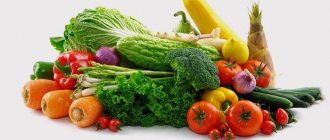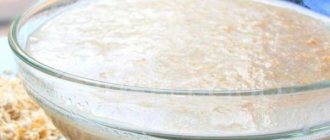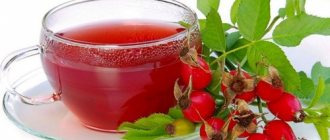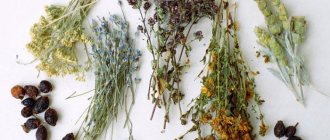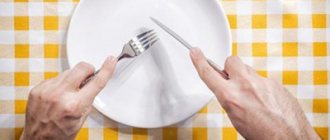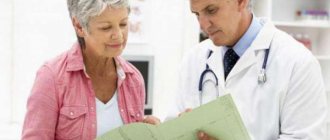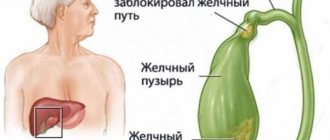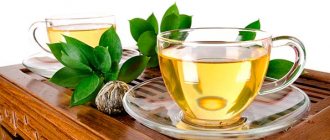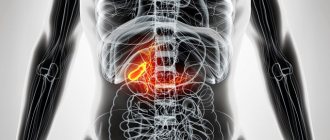How and how to treat pancreatitis and cholecystitis: drug treatment with antibiotics.
Inflammation of the gallbladder (cholecystitis) and disease of the pancreas (pancreatitis) most often begin at the same time, so it is impossible to treat one without affecting the other. Quite often, the symptoms of these diseases coincide down to the smallest nuances, and the complications they cause also. Therefore, the treatment of pancreatitis and cholecystitis has much in common.
Clinical picture of cholecystitis and pancreatitis
The symptoms of both diseases are similar to each other, and sometimes it is not possible to find out which organ became inflamed first. Even complications that arise against the background of cholecystitis and pancreatitis have similar clinical signs.
The main common symptom is severe pain. The pain is felt in the right hypochondrium (in the epigastric region), and it can radiate under the shoulder blade and into the back. Classic symptoms of cholecystopancreatitis are:
- nausea, repeated vomiting (with bile);
- increased temperature (often up to 38ºС) and increased heart rate, sometimes tachycardia is observed;
- jaundice and scleral icterus are possible;
- diarrhea;
- bitter taste;
- belching after eating food;
- heaviness in the epigastrium some time after eating.
When palpated and tapped with the edge of the palm, pain is noted on the right side of the body at the location of the pancreas.
Signs of diseases
The symptoms of chronic pancreatitis and cholecystitis are very diverse. However, similar signs can be identified:
- dull or burning pain in the upper abdomen, sometimes girdling, which can radiate to the back and heart area;
- pain that occurs some time after eating, increasing in the evening. If the diet is violated, the pain intensifies;
- flatulence, belching and sore throat;
- nausea, possible vomiting;
- diarrhea after eating;
- whitish stool;
- Possible manifestations of jaundice: yellowing of the skin, dark urine.
Basics of treatment of cholecystopancreatitis
Treatment of both diseases with medications is used when there is no urgent need for surgical intervention. The main essence of drug treatment for cholecystitis and pancreatitis is persistence in the fight against the disease and the duration of drug use.
Recently, as a result of the analysis of statistical data, the theory of the infectious cause of cholecystitis has become increasingly widespread. Antibiotics are used to combat pathogens. Antibacterial therapy is carried out by determining the sensitivity of bacteria to a specific drug. However, often during urgent hospitalization due to lack of time, broad-spectrum antibiotics are used.
The most effective against pathogenic microflora are cephalosporins, which come in four generations. The most commonly used 3rd generation cephalosporins are: Cefixime, Ceftibuten, and for parenteral administration - Ceftriaxone, Cefotaxime.
Penicillins are also indicated; they have the same antimicrobial effectiveness as cephalosporins. Among these antibiotics are Amoxicillin and Ampiox. Sometimes intramuscular administration of Gentamicin is indicated, which is active against gram-negative bacteria and even some staphylococci resistant to penicillin.
Among the antibiotics that accumulate in bile in high concentrations, macrolides (Clarithromycin, Azithromycin) are isolated.
Vitamins are used simultaneously with antibacterial therapy.
Antispasmodics will help get rid of pain. Basic painkillers: No-shpa, Spazmalgon, Ketanov, Atropine, Tramal.
Cholecystopancreatitis must be treated with the use of choleretic agents. They help with any symptoms due to their effect on the biliary function and generally alleviate the patient’s condition.
Diagnostics
The diagnosis of cholecystopancreatitis is made by a gastroenterologist after interviewing the patient, physical examination, general examination, laboratory and instrumental studies. For symptoms of inflammation of the pancreas and gallbladder you will need:
- Ultrasound;
- examination of the oral cavity;
- general clinical tests;
- blood chemistry;
- FEGDS;
- cholecystography;
- scintigraphy;
- probing;
- arteriography;
- endoscopic ultrasonography;
- CT or MRI;
- retrograde cholangiopancreatography;
- bile culture;
- stool analysis.
During an exacerbation, the following changes are observed in a blood test:
- increased amylase levels;
- acceleration of ESR;
- increased leukocyte levels;
- increased activity of liver enzymes.
When examining the stool of patients, changes in the level of elastase and a large amount of fat are revealed. The condition of the tissues can be assessed using ultrasound or tomography. With exacerbation of the disease, diffuse changes, swelling, adhesions, impaired motility of the bladder and dilation of the bile ducts are detected.
Differential diagnosis is carried out with cysts, tumors, gastritis, Crohn's disease, enterocolitis, peptic ulcer and biliary dyskinesia.
A gastroenterologist treats patients. For this pathology, conservative therapy is most often carried out. It includes:
- following a strict diet;
- giving up alcohol;
- use of symptomatic medications;
- physiotherapy;
- detoxification of the body;
- use of antibiotics;
- use of enzyme preparations (during the remission phase).
If complications develop, hospitalization is required. Infusion therapy is often performed. Saline and protein solutions are used.
Drug therapy
In case of exacerbation of the disease, the following groups of drugs are used:
- NSAIDs;
- analgesics;
- antispasmodics;
- choleretic;
- broad spectrum antibiotics;
- deactivators of pancreatic enzymes.
In case of inflammation of the pancreas and gall bladder and severe pain, pain-relieving drugs are prescribed. These include Duspatalin, Sparex, Niaspam, Baralgin, Drotaverin, No-Shpa and Spazmalgon. They are prescribed taking into account the age of the patient and contraindications. In case of severe pain syndrome against the background of exacerbation of the disease, novocaine blockades can be performed.
Outside the period of exacerbation, choleretic drugs based on ursodeoxycholic acid can be prescribed. These include Urdoxa, Ursofalk and Ursosan. They stimulate the excretion of bile, thereby normalizing digestion. In case of exacerbation of the disease, antisecretory drugs from the group of proton pump blockers (Omez, Rabiet, Pariet, Sanpraz) can be prescribed for a short course.
Antibiotics (cephalosporins, penicillins) are often included in the treatment regimen. They are used in the form of tablets, capsules, powders, or administered by injection. Antibiotics can also be prescribed for prophylactic purposes to prevent purulent complications (abscesses). With long-term use of drugs orally, eubiotics (Linex, Bifiform) are prescribed.
During the remission phase in the absence of pain, enzymes are indicated. They are prescribed only for pancreatic secretory insufficiency. The most commonly used enzyme medications are Pancreatin-Lect, Penzital, Mezim Forte, Creon 10000, Pangrol 10000, Creon 10000, Mikrasim, Panzinorm and Festal. If the cause of inflammation is parasites (protozoa or helminths), then anthelmintic or antiprotozoal drugs are prescribed.
Physiotherapy
If the functioning of the bladder and pancreas is disrupted, physiotherapy is useful. Most often carried out:
- Electrophoresis. This treatment method involves injecting medication under the skin using an electric current.
- Reflexology. Impact on sensitive points.
- SMT Therapy. The tissue of a sick person is exposed to alternating modulated current.
If a person has an exacerbation of the disease, then water procedures and mud therapy are useful.
Surgical intervention
If there are stones in the gallbladder cavity, surgical intervention is required. In case of frequent exacerbations, the organ is removed. This operation is called cholecystectomy. It is carried out as planned. The gallbladder can be removed laparoscopically. It involves making a small puncture in the abdominal cavity. This operation is less traumatic. Cosmetic defect is minimal.
In case of exacerbations of the disease and stones, it is possible to perform cholecystectomy from a mini-access. Cholecystostomy is less commonly used. This operation involves the application of drainage for the outflow of bile. This operation is most often performed on elderly and frail people. Crushing stones is less effective during exacerbation of the disease. This procedure does not prevent relapses in the future.
In case of exacerbation of pancreatitis, surgical intervention is justified in case of development of purulent complications, narrowing of the sphincter of Oddi, severe tissue sclerosis, formation of cysts and pseudocysts. Can be carried out:
- sphincterotomy;
- excision of stones;
- opening of abscesses;
- removal of part or all of the pancreas.
Surgical treatment is carried out according to strict indications.
Folk remedies
During an exacerbation of the disease, in addition to diet and drug therapy, medicinal plants and other folk remedies can be used. They are used with caution and only with the permission of a gastroenterologist. For exacerbation of cholecystitis and pancreatitis, the following are useful:
- immortelle;
- tansy;
- barberry;
- peppermint;
- anise;
- fennel;
- dill;
- St. John's wort;
- plantain;
- pharmaceutical camomile;
- elecampane;
- coriander;
- milk thistle;
- linen.
Infusions, decoctions and tinctures are prepared from these plants for oral use. If you have gallstones, some medications (chicory) are contraindicated. It is beneficial for patients to drink alkaline mineral water. It is indicated after an exacerbation in the absence of pain. For pancreatitis and cholecystitis, you can use honey.
In the first days of exacerbation of cholecystitis and pancreatitis, it is recommended to refuse food. You can only drink water. Patients with cholecystitis and pancreatitis are prescribed treatment table No. 5. You need to eat fractionally (small portions) every 3-3.5 hours at the same time.
It is necessary to exclude from the diet:
- alcoholic drinks;
- sparkling water;
- raw fruits and vegetables;
- egg yolk;
- spicy, fatty and fried foods;
- spices;
- pastry products;
- ice cream;
- fatty creams;
- pork;
- beef;
- offal;
- rich broths;
- salo;
- butter.
It is necessary to limit the consumption of confectionery products. Patients need to drink more clean water. During an exacerbation, you can eat the following foods:
- boiled meat, fish and vegetables;
- dried apricots;
- raisin;
- steam cutlets;
- cereals;
- low-fat fermented milk products.
The diet must be followed for at least a month.
Choleretic agents in the treatment of cholecystitis and pancreatitis
Due to cholecystitis, bile is thrown into the pancreas, thereby causing inflammation and swelling. Therefore, special attention should be paid to medications that stimulate the production of bile or eliminate its stagnation.
Choleretic drugs are indicated to treat cholecystitis and pancreatitis at any stage of the disease: both acute and chronic. They are represented by several types and differ in their effect on liver function.
| Name | Indications for use | Essential Medicines |
| Choleretics | Promotes the production of bile by the liver. They are divided into true choleretics (contain bile acids), plant and synthetic origin. Plant choleretics are produced from the herbs oregano, tansy, immortelle, mint, birch buds, rose hips, barberry, and coriander fruits. Medicines of a synthetic nature are derivatives of organic acids, which, in addition to choleretic, have an anti-inflammatory and antibacterial effect. | Allohol, Karsil, Cholenzym, Odeston, Lyobil, Meksaza, Decholin, Holagon, Nicodin, Cyclalon, Oxafenamid, Cholestil - most of these herbal medicines with the least side effects. |
| Cholekinetics | They influence the concentration of bile and remove it by affecting the tone of the gallbladder and pathways. First subgroup: drugs that affect the tone of the bladder and reduce the tone of the biliary tract. The second subgroup of drugs has a relaxing effect on the gallbladder. | Eufillin, Olymethine, Sorbitol, Xylitol, Metacin, Cholecystokinin, belladonna extract, barberry, etc. |
Sometimes, in the absence of stones in the gall bladder, blind tubage with mineral waters is indicated, which also has a good choleretic effect.
Phytotherapy
Treatment of chronic pancreatitis or cholecystitis is often supplemented with herbal medicine. Herbs that have a beneficial effect on the digestive system: yarrow, calendula, chamomile, mint, plantain and others. Below are recipes for medicinal preparations.
Recipes for medicines for cholecystitis
Now you will learn how to treat cholecystitis with herbs:
- Mix the following dry herbs in equal quantities (1 tablespoon each): wormwood, mint, yarrow, fennel fruit, immortelle. Pour boiling water (0.5 l) over the prepared mixture and leave for 8 hours. Take this herbal medicine in small sips throughout the day.
- Mix immortelle flowers (1 tsp), triphol leaves (1 tbsp) and mint (1 tsp). Pour boiling water (0.5 l) over this mixture and boil for 10 minutes over low heat. Take 100 ml before meals 3 times a day. The decoction taken will help remove the inflammatory process, improve the functioning of the gastrointestinal tract, and eliminate the symptoms of cholecystitis.
Herbal recipes for pancreatitis
It's time to learn how to treat pancreatitis with herbs. Popular treatments for pancreatitis are:
- A mixture of yarrow, immortelle, St. John's wort, mint, fennel, rose hips. Mix all the herbs (take 10 g of each component), take 1 tablespoon of herbal mixture, pour boiling water (0.5 l) over it, leave for 12 hours. It is best to infuse the medicinal mixture in a thermos. Then strain and drink 150 ml 3 times a day half an hour before meals.
- A disease such as pancreatitis is successfully treated with the help of a collection for which you will need the following components: elecampane root, St. John's wort, calendula, burdock, wormwood, chamomile, horsetail, string, sage leaves. Take 1 tablespoon of these ingredients. Mix all ingredients, pour boiling water, leave and take exactly the same as in the previous paragraph.
You can take medicinal herbal preparations only when a person is sure there is no allergic reaction to the herbs. You also need to know that some medications can cause constipation or diarrhea, while others can lower or increase blood pressure. Therefore, herbal medicine should only be prescribed by a doctor.
The principles of treatment, just like the symptoms of cholecystitis and pancreatitis, have much in common. With proper timely treatment, you can do without conservative therapy. With the help of complex treatment: medications, diet, herbal medicine, the recovery process will occur very quickly.
Vitamin therapy
Due to impaired metabolism and food digestion processes in cholecystitis and pancreatitis, it is recommended to take vitamin complexes. Despite food restrictions, vitamins are not prohibited, but on the contrary, they are recommended:
- vitamin B3 affects the production of trypsin, amylase and lipase, prevents diarrhea and stimulates blood circulation in the pancreas;
- vitamin B1 regulates the processes of fat, carbohydrate and protein metabolism;
- Vitamin C together with tocopherol prevents the formation of calculous deposits in the gallbladder. In addition, it increases general immunity, thereby influencing the relief of symptoms;
- cyanocobalamin affects the secretion of bile by the liver;
- vitamin B6 promotes enzymatic activity, the drug is available in the form of subcutaneous or intramuscular injections;
- retinol has a general strengthening, antioxidant effect and reduces the manifestations of dyspepsia.
Functioning of the gallbladder and pancreas
The pancreas and gallbladder play an extremely important role in the digestive process, and the activity of these organs is interconnected. The pancreas produces hormones (insulin, etc.) and digestive enzymes. They enter the duodenum through the bile duct, where they come into active form, mixing with other enzymes and bile and digesting fatty and protein foods.
The gallbladder stores bile produced by the liver. Concentrated bile enters the duodenum through the bile duct. Thus, diseases of the gallbladder and ducts can contribute to the development of pancreatic pathology.
Basics of pancreatic therapy
Treatment of the pancreas depends on the condition of the organ itself (exacerbation or remission) and the general well-being of the patient.
In case of exacerbation of the disease and pain syndromes, the patient is indicated to be treated with hunger and rest. The patient is given a drip with glucose and saline to prevent dehydration and reduce intoxication of the body.
Drugs indicated for cholecystitis and pancreatitis are divided into two types depending on the specific dysfunction of the pancreas:
- with hypersecretion of the organ, when increased production of pancreatic fluid occurs;
- with insufficient secretion of juice.
To reduce pancreatic hypersecretion, Omeprazole, Pantoprazole, Lansoprazole are used. To improve digestion, Mezim, Cotazim, Pancreatin, Pancitrate, Digestal, Creon are indicated. It is better to take the microgranular substance in tablets or capsules.
Alternative Herbal Treatment
For joint cholecystitis and pancreatitis, as well as some other gastrointestinal diseases, in order to minimize side effects, you can take decoctions and infusions of herbs: hawthorn, immortelle flowers, chamomile, string, mint leaves, elecampane, calendula flowers and others.
You can also prepare choleretic tea from medicinal plants: for half a liter of boiled water, four parts of cumin flowers, the same amount of yarrow, two parts of coriander and mint leaves, one part of chamomile and marigold. You need to brew a fresh portion every day.
It is impossible to cure combined chronic cholecystitis and pancreatitis forever, but it is quite possible to bring it to a state of long-term remission. To do this, you need to strictly adhere to dietary nutrition and control outbreaks of exacerbations.
Cholecystitis and pancreatitis are diseases that are caused by inflammation of the gallbladder and pancreas, respectively. They are often diagnosed together, but rarely appear separately. Cholecystitis and pancreatitis have similar symptoms and therefore it is recommended to treat them simultaneously. In addition, they are caused by the same reasons and give the same complications.
In a healthy person, enzymes that help digest food arrive from these internal organs into the digestive tract. The gallbladder is filled with high-concentration fluid (bile), which is produced by the liver, and the pancreas itself participates in the formation of pancreatic juice. The patient has these functions impaired.
Choleretic herbs for pancreatitis
Choleretic herbs for pancreatitis have a milder effect. They contain flavonoids, various essential oils, flavones, menthol, grape sugar, terpenes, resins, tannins, phytosterols, bitterness, phytoncides, saponins, vitamin C, etc.
Other healing properties of choleretic herbs:
- Anti-inflammatory;
- Appetizing;
- Laxative;
- Carminative;
- Normalizing metabolism;
- Regulating (increasing or decreasing) the acidity of gastric juice;
- Bactericidal and suppressive of putrefactive microflora;
- Regenerating
- Immunostimulating;
- Sedative;
- Antihyperglycemic;
- Anticancer.
When using choleretic herbs or herbs, it is necessary to exclude the presence of an allergic reaction to them.
Causes of diseases
The development of cholecystitis often leads to damage to the pancreas. If a person has both cholecystitis and pancreatitis, then this disease is diagnosed as cholecystopancreatitis, which is characterized by severe pain, especially sensitive to palpation.
Factors causing pancreatitis with cholecystitis of 3 types:
- Low mobility, excess weight, poor nutrition.
- Food and alcohol poisoning.
- Consequences of taking certain medications (antibiotics, sulfonamides, etc.).
The following are to blame for the occurrence of pancreatitis and inflammation of the gallbladder:
- unhealthy diet with a predominance of fatty, floury, spicy, fried, salty foods, canned food or food with insufficient calorie content;
- alcohol abuse, smoking;
- genetic predisposition;
- frequent infection of the nose, pharynx, larynx;
- physical inactivity, excess weight;
- frequent poisoning;
- problems with the metabolic process in the body, its slagging;
- diseases of the stomach, operations on it and the gall bladder;
- developing diabetes mellitus;
- intoxication of the body.
This is a list of common symptoms that appear in the presence of cholecystitis with pancreatitis. Of great concern is the combination of several of these factors with the possibility of developing complications, including oncology. In children, the disease develops with congenital enzymopathy, malformations of the digestive organs.
The symptoms of cholecystitis and pancreatitis are very similar, so it is difficult to determine in which organ the inflammation occurred first. The main symptom for both diseases is severe pain, concentrated on the right. Painful sensations cover the chest area, hypochondrium, radiating to the area of the right shoulder blade.
Other signs of cholecystitis and pancreatitis:
- vomiting, constant feeling of nausea;
- lack of appetite;
- heartburn, belching;
- increased pain when lying down.
The causes and symptoms of diseases are often the same. The mechanism of development of both is triggered by excessive consumption of fatty, fried foods, but there are nuances. The cause of an inflamed bladder is often infection with parasites and harmful microorganisms, and pain in the solar plexus area is considered a clear sign of pancreatitis.
The following manifestations indicate cholecystitis:
- nausea, vomiting mixed with bile;
- diarrhea;
- feeling of bitterness in the mouth;
- sometimes yellowness of the skin, sclera;
- elevated temperature, rapid pulse.
Inflammatory processes in both diseases are acute or chronic.
Preventive measures: how not to start the disease
Compliance with preventive measures will be very important for patients with cholecystitis. After all, it is extremely important not to provoke the development of pancreatitis or its exacerbation. First of all, you should pay attention to your diet and adjust it. Divide the entire daily meal into small portions in such a way as to turn 3 standard meals a day into 5-6 meals. Portions should be small.
Medicines are mandatory, without hope for improvement there is no point
Don't forget to take medications. You should not stop taking them after a slight improvement and reduction in pain. In some cases, it may be necessary to follow a lifelong diet and take certain medications to avoid the development of complications. Chronic pancreatitis and cholecystitis in acute forms will require annual treatment in sanatorium institutions.
Exacerbation of pancreatitis and cholecystitis is possible in both children and adults. These diseases are characterized by inflammation of the pancreas and gallbladder, leading to digestive disorders and various dangerous complications. Chronic pancreatitis accounts for up to 10% of all diagnoses in gastroenterology. Middle-aged women and older men are more often affected. Chronic cholecystitis is diagnosed mainly in people 40-60 years old.
The following factors contribute to the exacerbation of cholecystopancreatitis:
- congenital anomalies of organ development;
- low physical activity;
- prolapse of abdominal organs;
- pregnancy;
- binge eating;
- excess body weight;
- abuse of fatty and spicy foods;
- alcoholism;
- taking narcotic drugs;
- smoking;
- parasitic infections (opisthorchiasis, amoebiasis, ascariasis);
- stone formation;
- violation of fat metabolism;
- cystic fibrosis;
- taking medications (cytostatics, corticosteroids, estrogens);
- stagnation of pancreatic secretions.
The development of the inflammatory process (cholecystitis) in men is most often facilitated by the consumption of alcoholic beverages. It is especially dangerous on an empty stomach or in combination with eating fatty foods (lard, pork, beef, chips, fried potatoes).
What diet for gastritis and pancreatitis? Read more…
Signs of exacerbation of pancreatitis are:
- Pain in the upper abdomen, lower back or left hypochondrium. It can be constant or paroxysmal, weak or intense, dull or acute. The localization of pain depends on which part of the organ is inflamed (body, tail or head). Pain during exacerbation of pancreatitis often radiates to the area of the heart.
- Nausea.
- Vomit. It can be repeated and debilitating. Does not bring relief to a sick person.
- Belching.
- Bloating.
- Involuntary release of gases.
- Heartburn.
- Abnormal stool. Most often, constipation alternates with diarrhea. The stool becomes greasy, with a characteristic shine and a sharp sour odor. Feces are difficult to wash off and contain undigested pieces of food.
- Yellowness of the skin and visible mucous membranes.
- Red spots in the chest and abdomen.
- Abdominal pain on palpation.
- Dry skin.
Sometimes the liver and spleen become enlarged. With exacerbation of cholecystitis, the following symptoms occur:
- Pain. Dull and localized in the right hypochondrium. Lasts from a few minutes to several days. Intensifies after eating fatty and spicy foods.
- Bitter belching.
- Nausea.
- Bitter taste in the mouth.
- Slight increase in temperature.
- Bloating.
- Constipation.
Sometimes, with an exacerbation of cholecystitis, atypical symptoms appear in the form of chest pain and difficulty swallowing. With the calculous form of inflammation of the gallbladder in combination with pancreatitis, colic may occur - acute, intense and cramping pain.
Treatment with drugs
The functioning of the pancreas is closely related to the gallbladder. If the functions of one of the organs are impaired, the normal functioning of the other is impossible. Therefore, treatment of cholecystitis of various types and pancreatitis of any stage is carried out simultaneously, and these diseases are usually treated with medications and for a very long time.
Drug treatment of pancreatitis, as well as cholecystitis, is the main means of getting rid of them. It consists of taking medications of different spectrum of action, which are determined by the doctor. Usually they prescribe drugs that will be equally useful for the restoration of both organs.
Today, any medical research method shows that the cause of cholecystitis is infection. Therefore, in its treatment, the third generation of cephalosporins (Ceftibuten, Cefotaxime, Ceftibuten) is used.
Antibiotics
Antibacterial therapy is indicated if there is stagnation of bile, the walls of the gallbladder and pancreas are inflamed. The drug is prescribed in the form of tablets or intramuscular injections. Penicillins are effective in counteracting microbes. To get rid of staphylococci, gram-negative microbes on which they have no effect, Gentamicin injections are used. Patients are often prescribed Amoxicillin, Clarithromycin, and Ampiox.
The antibiotic "Bactrim" effectively suppresses infections. The suspension is taken twice a day before meals with measuring spoons (1 each if the phase of the disease is chronic, 6 – with an exacerbation). The course of treatment is at least 5 days. Another antibiotic, Biseptol, is considered a safe but powerful remedy. Prescribed for 4 days with a daily dose of 480 mg 2 times or once 960 mg (chronic course), 3 times during exacerbation.
Choleretic drugs for pancreatitis
At home, you can use ready-made herbal preparations with choleretic properties, which are sold in pharmacies. Or prepare your own choleretic infusions based on medicinal herbs. Treatment of pancreatitis should be comprehensive, so it is important to carefully monitor your menu and adhere to all nutritional recommendations.
Choleretic plants have a mild effect. For infusions, dill seeds, burdock rhizome, wormwood, and barberry root are used. Also corn silk, dandelion roots, birch buds, etc. The herbs described give not only a choleretic effect, but also have other properties.
Plants are characterized by regenerating, anti-inflammatory, antibacterial effects, provide hypoglycemic, sedative, restorative and diuretic properties. Regulate the acidity of the stomach, normalize metabolic processes in the body.
Herbal remedies from the pharmacy:
- Holosas for pancreatitis is an aqueous extract that normalizes digestion and relieves spasms from the bile ducts. Contains many vitamins.
- Tansy tincture enhances the production of bile and reduces its viscosity. It can be easily used in the treatment of the pancreas with enzymes.
- Alcohol tincture of barberry relieves spasms and enhances the excretion of bile. Take 20 drops per 100 ml of water, drink at one time.
Reviews from doctors note that all choleretic drugs have an irritating effect, therefore they are strictly prohibited during an acute attack or exacerbation of the disease. An adequate dose of medication helps speed up the process of dissolving lipids and carbohydrates, reduces the load on the organs of the digestive system, including the pancreas, which improves the patient’s condition.
Experts will tell you how to eliminate bile stagnation in the video in this article.
While taking choleretic drugs, the patient should remember that they can cause loose stools. That is why their use is undesirable for nonspecific ulcerative colitis or Crohn's disease.
During pregnancy, only those choleretic drugs can be prescribed that do not cause an increase in uterine contractility and do not penetrate through the placental bloodstream to the fetus. In addition, they should not cause a general deterioration in health.
We invite you to read: How to measure your sugar using a glucometer
Conventionally, all choleretic drugs are divided into two groups:
- Choleretics – increase the formation of bile;
- Cholespasmolytics and cholekinetics - promote the normal outflow of bile from the gallbladder.
This classification of choleretic drugs is rather arbitrary, because most of them have all the properties described above. In terms of their composition, they can be synthetic, based on the sodium salt of dehydrocholic acid, bile acids and choleretic plants.
For pancreatitis, the following choleretic drugs can be used:
- Allohol;
- Ursosan;
- Essentiale;
- Odeston;
- Chophytol;
- LIV-52;
- Libiol;
- Holenzyme;
- Nikodin et al.
All choleretic drugs should be taken 30 minutes before meals. The total daily dose is divided by the number of meals, because to achieve maximum effect, these drugs should be taken before each meal. The medications should be taken with a sufficient amount of regular drinking water.
As a rule, taking choleretic drugs is long-term – about 3-8 weeks. Subsequently, the course of taking them in prophylactic doses should be repeated 2-4 times a year.
For the treatment of pancreatitis, doctors prescribe choleretic agents, which come in the form of pharmaceuticals and plant herbs. With the help of medications that increase bile production in case of an inflamed pancreas, bile stagnation can be avoided. It is necessary to take choleretic drugs after consultation with a specialized specialist, strictly adhering to the indicated doses and duration of the therapeutic course.
Why do they take it?
In case of chronic pancreatitis or its acute form, patients require treatment with choleretic agents. They are used for inflamed pancreas to prevent stagnation of bile, which is possible due to problematic outflow of bile from the bladder. In addition, such medicinal and herbal preparations relieve swelling, inflammation and pressure from internal organs. Agents that enhance bile formation normalize the outflow of bile and increase the tone of the gallbladder.
Choleretics
For pancreatitis, pharmaceuticals that belong to the group of choleretics and have a pronounced choleretic effect can be prescribed. These drugs stimulate and increase the secretion of liver cells and as a result of their use, the following changes can be observed in the body:
- improvement of the digestive process and vitamin absorption;
- relief of pain and nausea;
- increased intestinal activity;
- eliminating the feeling of heaviness in the stomach after eating.
Choleretics are not prescribed in the acute phase of pancreatitis; in other cases, the following types may be present in the treatment regimen:
- "Pancreatin". The drug "Pancreatin" is a supplier of pancreatic enzymes, and its bile extract takes an active part in the breakdown of lipids and promotes their normal absorption, as well as some types of vitamins.
- "Allohol." This medicine is prescribed for pancreatitis to improve digestion and intestinal functioning.
- "Holenzym." The choleretic agent consists of components of animal origin and is used to relieve spasms and improve digestive processes.
- "Deholin." This medicine is intended for intravenous administration and is used for cholecystitis, pancreatitis and other pathologies of the digestive system.
In addition to the listed medications, the group of choleretics includes the following pharmaceuticals:
- "Biliton";
- "Liobil";
- "Suprakol";
- "Kholomin";
- "Vigeratin";
- "Holamine";
- "Hologon";
- "Gimecromon";
- "Osalmid";
- "Cyqualon".
Why do they take it?
Additional treatments
If treatment with medications goes well, then additional methods of restoring the body are used to enhance the healing effect.
Physiotherapy
During remission, various physiotherapy procedures can be used. Electrophoresis is effective (for pancreatitis the device is placed on the stomach, for cholecystitis - on the liver). Bile begins to be better produced after 10 sessions, blood circulation in organs improves, and pain is relieved. If stones in the gall bladder have not yet been detected, then the risks of their formation are reduced by physical procedures.
Mineral water
To eliminate bile stagnation, it is recommended to use blind tubage using the Demyanov method. In the morning on an empty stomach you need to drink a glass of still mineral water with the addition of soda. Then lie down and put the heating pad on your right side.
It is useful to drink mineral water 150 ml per dose to facilitate digestion and reduce the load on diseased organs, as it can block hydrochloric acid from the stomach, which causes inflammation. It is better to choose medicinal water from the Borjomi and Essentuki brands.
Starvation
During the acute period of pancreatitis, doctors advise fasting and drinking a lot of water. Move a little to reduce blood flow (sick organs are more likely to return to normal). With cholecystitis, complete fasting is unacceptable; eating lean food. Fasting days with water and fruit are useful.
Water and proper nutrition
It is important not to forget about the benefits of clean water, especially necessary for the digestive organs during chronic diseases. You need to drink a lot (2-2.5 liters) every day.
It will increase the flow of bile and improve the functioning of diseased organs. Cannot be replaced with other drinks. Only water helps remove stones from the body, preventing them from forming large solid formations.
Nutrition for chronic diseases of the pancreas and problems with the gallbladder is rational, aimed at alleviating the patient’s condition.
It is important to use compatible products. You should not combine meat with potatoes, animal fats with vegetable fats. It is recommended to eat vegetables with any food, preferably those that grow in your area. If you have pancreatitis, add more protein to your diet. There is a lot of it in fish, eggs, meat, low-fat cottage cheese. You should not eat easily digestible carbohydrates that increase the thickness of bile.
Patient nutrition rules:
- Fractional meals (up to 6 times), small portions.
- The food is warm, meat and fish are steamed.
- Consumption of salt, smoked, fatty, fried, and spicy foods is limited.
- Canned food, dishes with beans, soy, rice, wheat, chocolate, alcohol and foods high in fiber are prohibited.
- Animal fats are replaced with vegetable fats.
Vitamin therapy
Due to disruption of the metabolic process and deterioration of food digestion, taking vitamins and microelements is indicated. Vitamins B1, B2, B3, B6, B12, A, C are useful. Retinol and calcium are important for patients. Everything can be taken from pharmaceutical preparations or products.
Folk remedies
Treatment of pancreatitis and cholecystitis involves the use of various folk remedies. The most famous of them is herbal medicine. This treatment for pancreatitis and cholecystitis involves the use of medicinal plants in the form of decoctions and tinctures. More often, herbal preparations with different components are taken.
Herbal medicine is used in courses of 1-1.5 months with a break of 2 weeks. It is contraindicated for pregnant women. Anti-inflammatory preparations are used, for example, with chamomile, dandelion, calendula, clover. Mint, string, roots of rhubarb and calamus, black elderberry (flowers, fruits), etc. are considered choleretic.
The best way to treat pancreatitis along with cholecystitis is up to everyone to choose for themselves. Many people find that a tincture of propolis shavings in vodka, prepared in equal proportions, helps. Drink it half an hour before meals 2 times a day (1 tsp per half glass of water). Propolis is also effective with milk (grind 3-5 g, add to a glass of warm milk). Drink before bed.
Phytotherapy
In addition to medications, herbal infusions can also be used. Calamus root, flowers and fruits of black elderberry, mint, and rhubarb root have proven themselves well as choleretic agents. As a rule, they use multi-component mixtures, which you can make yourself or buy ready-made choleretic teas at the pharmacy.
Recommendation: before you start taking decoctions or infusions of medicinal herbs, you must make sure that there is no allergy to them and that the body tolerates their use well (there is no weakening of the stomach or constipation, no increase or decrease in blood pressure).
The most popular recipes for cholecystitis preparations:
- 15 g of immortelle, 10 g each of yarrow, wormwood, fennel fruits, mint are poured into 600 ml of cold water and left for 8 hours. Take 400 ml throughout the day in sips;
- 5 g of coriander fruits and immortelle flowers, 15 g of triphol leaves and 10 g of mint leaves are added to 600 ml of boiling water and boiled for 10 minutes. Take 100 ml before meals three times a day;
- 15 g triphol leaves, 10 g each coriander and mint, 20 g immortelle flowers. Pour 600 ml of boiling water and leave for half an hour. Take 100 ml three times a day before meals.
Herbal medicine is optimally carried out in courses of 1 - 1.5 months, then take a break for 2 weeks.
Note! During pregnancy, herbal medicine is contraindicated.
Treatment of cholecystitis and pancreatitis with medications.
Perhaps everyone knows that pancreatitis and cholecystitis occur throughout the population. However, these diseases often occur in pairs. Treatment of pancreatitis and cholecystitis is a serious issue, since it affects not only the fundamental aspects of therapy, but also the characteristics of the course of the diseases, methods of diagnosing them, etc.
Possible complications
Exacerbation of diseases occurs if proper treatment is not provided and the diet is not followed. Inflammation of the digestive system is often accompanied by severe pain and interferes with eating. During an exacerbation, the patient is in a situation where his quality of life drops significantly. To alleviate the condition, he needs to spend more time in the air, move, and eat taking into account his problems.
Possible complications from diseases are associated with a lack of enzymes entering the digestive system from the gland and bile reservoir. It can manifest itself as simple inflammation in them or a disorder in neighboring organs (stomach, liver), leading to diabetes mellitus. The acute course of the disease is possible due to alcohol poisoning, complications of cholelithiasis and requires urgent treatment.
Don't let the condition get worse. After all, an advanced disease leads to extensive necrosis of the pancreas and even death. It is possible to definitively cure chronic pancreatitis and cholecystitis only at an early stage. In other cases, maintain diseased organs in a state of remission, avoiding complications.
Cholecystitis and pancreatitis are diseases that often appear simultaneously in a patient. Acute cholecystitis ranks second in frequency of occurrence after appendicitis. This is a disease caused by infection. The diagnosis of pancreatitis is also often made by a gastroenterologist. This disease is dangerous because it can cause diabetes, abscesses in the pancreas, and kidney failure. It is better to treat pancreatitis and cholecystitis at the same time, and by what methods to do this, read below.
Diagnosis and diagnosis
Today, treatment of pancreatitis and cholecystitis together begins with research procedures that have long become familiar to patients.
- First of all, the doctor will prescribe an ultrasound examination of the organs in the abdominal cavity.
- Clinical tests of blood, urine and feces are also mandatory studies, the results of which on an individual basis will help to more accurately select the appropriate medications.
Initially, for such diseases, symptoms begin to be treated.
Only after eliminating the unpleasant and dangerous manifestations of the disease can we begin measures to normalize and restore the full functioning of diseased organs and systems.
What is the relationship between pancreatitis and cholecystitis?
Chronic cholecystitis and pancreatitis are ailments of the digestive system. Pancreatitis is a disease of the pancreas, and cholecystitis is an inflammation of the gallbladder.
In the body, these organs work together, they release enzymes into the digestive tract for the normal processing of any food by the intestines. At the same time, bile produced by the liver accumulates in the gallbladder, and the pancreas independently produces a digestive enzyme - pancreatic (pancreatic) juice.
With cholecystitis and pancreatitis, the functioning of these organs of the digestive system deteriorates. So, with cholecystitis, bile begins to stagnate in the gallbladder, and an inflammatory process occurs. And with pancreatitis, gastric juice remains in the pancreas and it begins to digest itself. Also, with pancreatitis, juice can enter the gallbladder and then it begins to corrode its walls. That is why it is believed that cholecystitis and pancreatitis are diseases that complement each other.
Cholecystopancreatitis: causes of the disease
In approximately 80% of cases, the factors that influenced the development of these disorders have common features. Both pathologies can occur due to the following reasons:
- disturbance in the body's metabolic processes;
- unhealthy lifestyle, alcohol abuse;
- infectious diseases;
- pathologies of the gallbladder of congenital type;
- presence of diabetes mellitus (regardless of type), cholesterol metabolism disorder;
- prolapse of the gastrointestinal tract;
- problems with bowel movements (frequent constipation, diarrhea);
- excessive consumption of spicy, sour, smoked foods.
Prolapse of the gastrointestinal tract leads to cholecystitis and pancreatitis
The pancreas and gall have their own functions and perform different roles in the body. However, they have one similar purpose - the production of enzymes that improve digestion and digestion of food. The purpose of the bladder is to concentrate the secretion of bile produced by the liver, and the pancreas produces enzymes and juice.
If the inflammatory process develops in the bladder, bile stagnation occurs, and as a result, the diagnosis of cholecystitis occurs. In chronic pancreatitis, a phenomenon occurs that provokes digestive enzymes to remain in the gland, due to which a certain “self-digestion” of the organ occurs.
Important! When there are no diseases or pathological processes in the body, these organs work in pairs, since they have one excretory duct. As soon as a problem occurs in one organ, the second one is also affected.
The bladder and gland are organs whose task is to secrete digestive juices, speeding up and making the process of digesting food more efficient. The gall bladder stores bile and then releases it, helping fats in the small intestine mix with water. The pancreas accelerates the breakdown of fats.
Cholecystitis can also develop against the background of the formation of stones in the gallbladder, which leads to blockage and stagnation, followed by an inflammatory process. Since the pancreas and gallstones work in pairs, this pathological process negatively affects the gland, spreading inflammation and degenerative changes in the organ.
Gallstones lead to inflammation, which in turn leads to pancreatitis
What are the signs to distinguish diseases?
The symptoms and treatment of pancreatitis and cholecystitis have many similarities; only a doctor can make a correct diagnosis.
General symptoms of cholecystitis and pancreatitis:
- Vomiting, nausea.
- Pain syndrome.
- Temperature increase.
- Appearance of sticky sweat.
A person who does not have a medical education will not be able to correctly diagnose himself. Only a narrow specialist - a gastroenterologist - knows the difference between these diseases. The main difference between the ailments is that with pancreatitis the patient has more pain in the left side of the abdomen, and with cholecystitis the pain radiates to the right side, since that is where the gallbladder is located. These diseases may also differ in such characteristic symptoms as dry mouth. It is characteristic of pancreatitis. But bitterness in the mouth is a sign of cholecystitis.
Physiotherapeutic treatment
Pancreatitis and cholecystitis can be successfully treated with the help of physiotherapeutic measures, for example, UHF, ultrasound, electrophoresis.
Treatment of pancreatitis and cholecystitis with ultrasound, UHF or electrophoresis is quite successful, since these procedures increase bile production, improve local blood circulation, reduce pain, eliminate inflammation, and prevent the formation of stones.
The only difference in physiotherapeutic treatment is that with a diagnosis of “chronic pancreatitis” the patient is given a therapeutic lotion on the left side of the abdomen, and with a diagnosis of “chronic cholecystitis” - on the right side.
Joint treatment of these diseases also involves the use of mineral waters, for example, “Essentuki”, “Borjomi”.
Therapeutic mud is also a very good remedy for chronic cholecystitis and pancreatitis. They are able to relieve inflammation in the pancreas and gall bladder, relieve pain, and increase immunity.
Without it, treatment of both acute and chronic cholecystitis or pancreatitis makes no sense. After all, any disease associated with improper functioning of the digestive tract is often caused by poor nutrition. Therefore, the patient must adhere to a diet that consists of following these rules:
- You need to eat little by little.
- It is forbidden to eat spicy, fatty and fried foods. A priori, in case of cholecystitis and pancreatitis, you should not eat canned food, sausages, or smoked meats. Alcohol, cocoa, and chocolate are strictly prohibited.
- It is healthy to eat fermented milk products, boiled vegetables, soups, cereals, steamed meat and fish.
- You can drink compotes and mineral water.
Conservative therapy
Treatment of cholecystitis and pancreatitis with medications must be carried out in order to remove the infection, eliminate stagnation of bile, relieve inflammation, and improve the outflow of pancreatic juice. Experts prescribe the following drugs for pancreatitis and cholecystitis:
| Drug names | Effect on the body |
| No-shpa, Motilium, Ketorolac, Meteospasmil, Papaverine | They have an analgesic effect, relieve spasms, relax constricted bile ducts |
| Cisapride, Eglonil | Promotes better contraction of the gallbladder for efficient release of bile |
| Holosas, Holagol, Holenzim | These are choleretic drugs necessary for the normal flow of bile |
| Opeprazole, Lansoprazole, Famotidine | Normalizes the production of pancreatic juice |
| Festal, Pancreatin, Mezim, Creon | They are enzyme preparations whose action is aimed at normalizing the digestion process |
| Biseptol, Bactrim, Oletetrin, Ampicillin, etc. | These are antibacterial drugs that suppress the infection, which provoked the inflammatory process. Antibiotics for cholecystitis and pancreatitis are necessary to establish the outflow of enzymes |
| Vitamins C, A, E | Promote the absorption of nutrients, necessary for normalizing damaged tissue of the pancreas and gall bladder |
Drug treatment
To eliminate the conditions for the proliferation of bacteria, it is necessary to establish the outflow of enzymes from the inflamed organs and stop stagnation; antibiotics cope with this. With cholecystitis, disruption of bile flow may be associated with:
with spasm of the bile ducts and then antispasmodics are prescribed - No-shpu, motilium, papaverine;
with excessive relaxation of the gallbladder, as a result of which the organ is unable to contract and eject bile. In such cases, drugs that have a choleretic effect are prescribed - cholagol, holosas, eglonil, cisapride.
With pancreatitis, two problems are also possible - too low production of pancreatic juice, then antispasmodics or hypersecretion of the pancreas are prescribed, and then the following medications are prescribed:
To improve digestion, enzyme preparations are prescribed - mezim, pancreatin, cotazim, digestal, pancitrate and the like. For cholecystitis, without concomitant pancreatitis, bile preparations may be prescribed. The main thing is that antibiotics do not cause complications.
During the acute period of illness, the doctor may prescribe fasting in the first days. At this time, it is recommended to drink plenty of fluids, preferably clean water, and move as little as possible.
Rest will reduce blood flow in the organs, which will allow the pancreas or gallbladder to quickly return to normal; this is how you can treat the gland in a unique way. But even with the chronic course of the disease, it is necessary to follow certain principles in nutrition. The rules are simple:
- - small meals, 5-6 times a day, the last meal no later than 3 hours before bedtime;
- - cottage cheese and fermented milk products, vegetables and vegetable soups, porridges are healthy;
- — it is better to steam meat and fish;
- - prohibited: alcohol, chocolate, cocoa;
- — it is necessary to limit the consumption of smoked meats, fatty, spicy, fried foods.
Food should be warm, not scalding. It is not recommended to go to rest immediately after eating - this weakens the flow of bile. It's best to walk for about 30 minutes.
Pancreatitis and cholecystitis cause sharp pain after eating. By following a diet, you can not only reduce pain, but also stop the progression of the disease.
When is surgery needed?
The drug treatment method, when prescribed correctly, brings good results, but in some cases drug therapy does not help. Thus, patients diagnosed with cholecystitis and/or pancreatitis are treated surgically in the following cases:
- With a necrotic form of the disease, suspected gangrene.
- For severe pain that even painkillers do not help.
- As the disease progresses.
- If there are stones in the gall bladder.
- With obstructive jaundice.
- With repeated attacks.
Drug treatment of cholecystitis and pancreatitis does not help in these cases, so doctors resort to surgery: they remove the gallbladder and part of the pancreatic tissue.
To cure cholecystitis and pancreatitis during an exacerbation, you need to follow 3 principles: cold, hunger and rest.
Cholekinetics
The action of cholekinetic agents is aimed at increasing the tone of the gallbladder while simultaneously relaxing the sphincters of the biliary tract. This improves the process of bile secretion into the intestines.
For the treatment of inflammation of the pancreas, cholekinetics such as Choleritin, Magnesia, Xylitol, and Mannitol have proven themselves to be quite effective.
Many doctors prefer Sorbitol, which is used as an intravenous solution. The drug increases the secretion of the digestive glands and improves digestion. In addition, Sorbitol is involved in the synthesis of B vitamins and promotes the reproduction and activity of beneficial microbes and bacteria in the intestines. A special advantage of the active substance is that it has virtually no side effects. However, with all its advantages, Sorbitol is not prescribed to persons with hypersensitivity and fructose intolerance. Cholekinetics are contraindicated if there is a history of ascites, colitis and irritable bowel syndrome.
Important information: What symptoms are defined by the authors for pancreatitis?
